Martin Luther King, Emmeline Pankhurst, Malcolm X, Rosa Parks. As a kid, I knew these names. I was taught about the brave things these people had done and the change they had created. They were people to look up to.
Somewhere along the way, I became aware that none of these people were disabled. Despite all the opportunities I was afforded by the Disability Discrimination Act (DDA), passed in 1995 when I was a few months old, I lived with the misguided idea that disabled people had never fought for our civil rights. I had no idea that I was only in the classrooms where I learned the names of King and Pankhurst because of people whose names were never mentioned.
As a disabled person, having a sense of your history is important. It helps you feel less alone. Helps you understand that the ableism you experience is part of a pattern across time and geography. Helps you see that change is possible. Helps you see, by providing the role models absent in pop culture or politics or business, the possibilities for your own life.
Over the past few years, my work as a journalist and activist has finally led me to learn some of the history of the disability rights movement. What I’ve found is that it is as rich as any other civil rights story, full of characters who believed things could be different and made them so. Not all of them set out to be, or even considered themselves, activists, but each of them has had a profound effect on the lives of disabled people. I’ve loved getting to know them – filling in a history I’ve been looking for since those primary school lessons – and I’ve loved finding out that the irreverence and style embodied by my fellow disabled activists today are just a continuation of what has gone before.
Creating change starts with growing awareness. So, to mark Disability History Month, let me share some of these fierce, feisty, overlooked characters with you.
Rosa May Billinghurst (1875-1953)
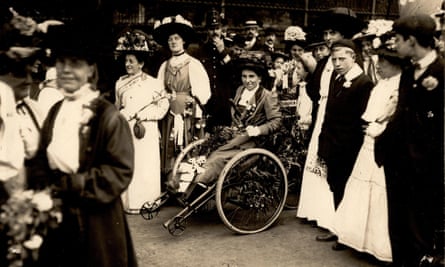
My personal favourite, Rosa May Billinghurst was a wheelchair-using suffragette. She was one of the early members of the Women’s Social and Political Union and helped found its Greenwich branch in 1911. As a very visible presence at events and demonstrations, she became known as the “cripple suffragette” – possibly not the most politically correct moniker by today’s standards, but a sign of her importance to the movement. Billinghurst got around on a specially adapted tricycle, which became a central part of her image and historical legacy. At one demonstration, the police tried to stop her participating by confiscating her tyre valves. At another, she used the trike to try to break through police lines. What more could you want from a heroine?
Barbara Lisicki (1954-)
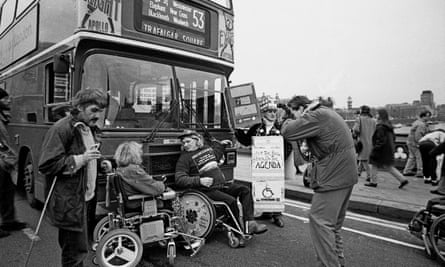
Eighty-odd years later, Barbara Lisicki was also out on the streets of London in her wheelchair, demanding rights for disabled people. The punk performer turned activist was the driving force behind the Disabled People’s Direct Action Network (DAN), the UK’s first nationwide disability rights organisation. DAN organised successful protests against ITV’s charity telethon, which portrayed disabled people as pitiful and helpless, and inaccessible public transport systems, before turning its attention to forcing the passage of a general disability rights law. Thanks to pressure from Lisicki and DAN, and a brief illegal foray into the Palace of Westminster, parliamentary resistance was overcome and the landmark DDA was finally passed in 1995. Lisicki remains an icon of the movement, while DAN itself was revived during the pandemic to protest against the government’s failure to protect disabled lives.
Alan Holdsworth (1952-)
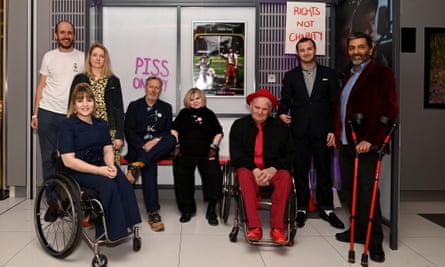
Where there was Barbara, there was Alan – the pair were a couple during much of the time they were running DAN. Alan was a musician who used his lyrics for social justice – and it may have been those wordsmith skills that helped him coin the (in)famous “Piss on Pity” slogan during the 1990 and 1992 Block Telethon campaign. The campaign was hugely influential in changing how disabled people were seen and treated by the media. Alan is still a performer and activist; having moved to the US, he founded the country’s first Disability Pride event in 2013. It now takes place annually.
Javed Abidi (1965-2018)
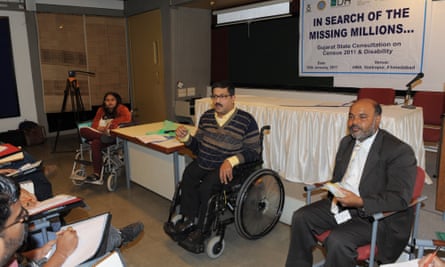
Javed Abidi was a journalist and disability activist from Uttar Pradesh, India. Having studied journalism and communications in Ohio, he returned to India in the early 1990s. There, he was asked by Sonia Gandhi (who was then leader of the opposition and had been the wife of the assassinated PM Rajiv Gandhi) to set up the disabilities unit of the foundation she started in her husband’s name. In 1993, he founded the Disability Rights Group, India’s first cross-disability campaigning organisation. Protests led by Abidi were instrumental in forcing the Indian parliament to pass the country’s first disability rights act in 1995, and Abidi is personally credited with ensuring the law applied to those with “invisible” disabilities such as autism and dyslexia.
The same year, the Rajiv Gandhi Foundation founded the National Centre for Promotion of Employment for Disabled People and appointed Abidi as its director. Abidi and the Centre collaborated with multinational tech companies such as Microsoft, Apple and Hewlett-Packard to help them employ disabled people in India. He also led campaigns to make India’s national monuments more accessible – and to make it easier for the country’s estimated 60 million disabled people to vote.
Judy Heumann (1947-)

If you’ve watched the Netflix documentary Crip Camp you know about Judy (if you haven’t, you really should). As a girl she spent her summers at Camp Jened, a holiday camp for disabled teenagers, getting to know a generation of future activists. Today she is known as the mother of the modern disability rights movement. She began as a student activist, then sued the New York Board of Education when it denied her a teaching licence, as it claimed she would not be able to evacuate students in the event of a fire. The board settled the case, and she became the city’s first wheelchair-using teacher.
Heumann was later one of the organisers of iconic demonstrations that saw disabled people block New York’s Madison Avenue, and of the “504 sit-in”, during which disabled people occupied a federal building in San Francisco for 28 days in April 1977 in order to protest against the watering down of anti-discrimination regulations. These protests were significant because they were the first in which people campaigned on the basis of “disability” as a sociopolitical identity, rather than individual types of impairment, setting the tone for the next 50 years of activism. Later, Heumann took her campaigning to the international stage, working for the World Bank and in the Clinton and Obama administrations to make disability rights a plank of the international development agenda.
Jane Campbell (1959-)

Originally sent to a school for disabled children that did not have an academic curriculum, Lady Campbell clawed her way into the mainstream, graduating with a master’s from the University of Sussex. Her campaign for her own, and others’, access to education was just the beginning of a long and successful career as an activist. She set about turning a charity-focused approach to disabled people’s needs to one based on civil and political rights, including paving the way for the direct payments model (in which disabled people themselves, rather than councils, manage their own care). She was and is one of the leading proponents of the Independent Living Movement, which focuses on empowering disabled people to live in their own homes, and set up the country’s first register of certified disability equality trainers. In 2006, Lady Campbell became one of the first commissioners for the Equality and Human Rights Commission, helping ensure that businesses and public bodies fulfilled their obligations on disability rights. In 2007 she was awarded a life peerage and became one of the few disabled people in parliament. From her place in the House of Lords, she has continued to champion social care and the importance of independent living.
Yetnebersh Nigussie (1982-)
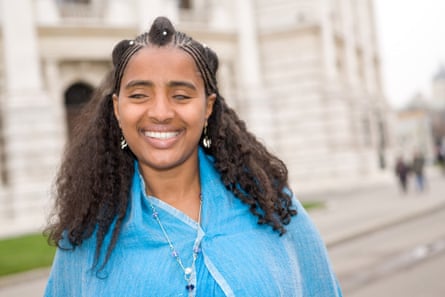
Yetnebersh Nigussie is an Ethiopian lawyer and leading disability rights activist. Her advocacy career began while she was a student at Addis Ababa University, where she led student committees on Aids and on women’s rights. Since then, she has worked across 20 voluntary organisations, and founded the Ethiopian Center for Disability and Development, which aims to foster networking opportunities, access improvements and economic empowerment for the country’s disabled people. Since 2016 Yetnebersh has worked for the international NGO Light for the World, to promote inclusive education and to tackle preventable blindness. In September 2017 she was a joint-winner of the Right Livelihood award – known as the “alternative Nobel” – for her work promoting inclusion of disabled people and helping them reach their full potential.
Stella Young (1982-2014)

The late, great Stella Young was a comedian, journalist and campaigner from Australia. Like Judy Heumann before her, she had started working life as a teacher, before moving into educating the general public about disability. Her career ranged from hosting a disability culture programme to editing the ABC’s online disability magazine, from working with governments to create better disability policies to performing at the country’s leading comedy festivals. But what she is most known for is a Ted Talk she gave in 2014, entitled “I am not your inspiration, thank you very much”. The speech, in which she eviscerates the low expectations that lead to a disabled person doing a food shop being called “inspirational”, has taken on iconic status in disability rights circles (I have shared the link several hundred times). In her talk, Young popularised the extremely useful term “inspiration porn” to refer to the objectifying of disabled people’s struggles and achievements in order to make nondisabled people feel better. Her unexpected death at the age of just 32 was a huge blow to her friends and our community, but, every time I refer to myself as an “uninspirational disabled person,” I give a silent nod to Stella and her legacy.
Ed Roberts (1939-95)

Ed Roberts became an activist when an administrator at his high school threatened to deny him a diploma because he hadn’t completed the PE requirements (he was paralysed from the neck down). His mother petitioned the local school board, and a lifelong campaigner was born. But Roberts’ struggle to access education was not over – having accepted him into its undergraduate programme, the University of California, Berkeley refused to admit him on the grounds that the dorm building could not accommodate the iron lung he slept in. Roberts eventually persuaded the college to convert a wing of its health centre into a dorm, and over time several other disabled students joined him there. As Berkeley transformed into a hotbed of student politics during the 60s, Roberts and his fellow disabled students began to understand the political nature of disability and campaigned for better accessibility on campus. It was while a PhD candidate at Berkeley that Roberts took the step that would earn him his place as the “father of disability rights”: helping to set up the first Center for Independent Living to be run by disabled people themselves. Over time, hundreds of organisations across the country modelled themselves on the Berkeley centre, forming a movement that empowered disabled people to live in their own homes and communities. Roberts worked on disability rights for the California government, and collaborated with Judy Heumann on the 504 sit-in in 1977. The pair later set up the World Institute on Disability. After Roberts died in 1995, aged 56, his personalised wheelchair was donated to the Smithsonian museums.
Brad Lomax (1950-84)
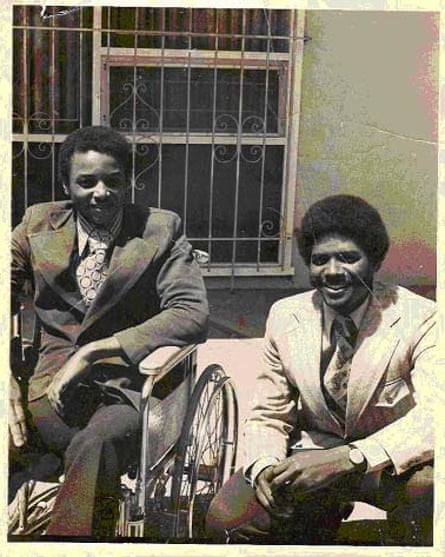
Another veteran of the successful 504 sit-in, Lomax was a founding member of the Washington chapter of the Black Panther Party (BPP). It was Lomax’s involvement with the Panthers that led the organisation to provide practical support to the 504 demonstrators – bringing in daily hot meals and other provisions. Many occupiers later said that their plan would have failed without the BPP’s involvement; it paid for Lomax and other San Francisco organisers to travel to DC to make their case to national politicians. But this wasn’t the first time Lomax had brought the two groups together: two years earlier, in 1975, he had offered the Panthers’ support to Ed Roberts’ Center for Independent Living, helping to get material aid to disabled people in East Oakland’s black community.
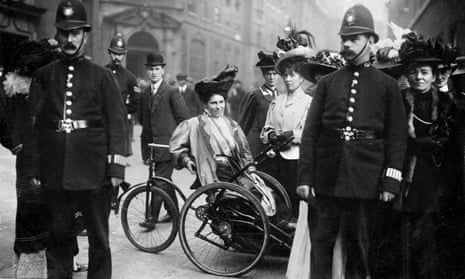
Comments (…)
Sign in or create your Guardian account to join the discussion